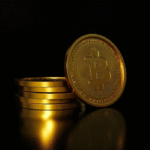 The regulatory landscape of digital assets is complex and continuously evolving, influenced by a multitude of factors including technological advancements, market dynamics, and shifts in policy making. In the United States, prudential regulators have expressed caution regarding the issuance or holding of crypto assets on decentralized networks, highlighting concerns about their alignment with safe and sound banking practices. Similar cautious approaches can be observed globally, with regulatory bodies like the Basel Committee on Banking Supervision emphasizing the unique risks associated with permissionless blockchains.
The regulatory landscape of digital assets is complex and continuously evolving, influenced by a multitude of factors including technological advancements, market dynamics, and shifts in policy making. In the United States, prudential regulators have expressed caution regarding the issuance or holding of crypto assets on decentralized networks, highlighting concerns about their alignment with safe and sound banking practices. Similar cautious approaches can be observed globally, with regulatory bodies like the Basel Committee on Banking Supervision emphasizing the unique risks associated with permissionless blockchains.
Global Regulations and Their Impact
Across the globe, different regions are adopting varied approaches to digital asset regulation. The European Union, for instance, has introduced the Markets in Crypto-assets Regulation (MiCAR), which aims to provide a harmonized regulatory environment for crypto assets across its member states. However, individual states have the autonomy to delay compliance deadlines, adding a layer of complexity for market participants. In the UK, regulatory sandbox initiatives are being used to pilot the integration of tokenized securities into the market, reflecting a cautious but progressive approach to digital asset innovation.
Permissioned vs. Permissionless Networks
The distinction between permissioned and permissionless networks is becoming a focal point in regulatory discussions. Permissioned networks, which restrict access to approved participants, are often viewed as more secure and compliant with current regulatory frameworks. This is because they enable better control and oversight over transactions, which is critical in adhering to anti-money laundering and counter-terrorism financing regulations.
Tokenization and its Regulatory Implications
Tokenization of assets, particularly in forms like digital bonds and securities, is being cautiously explored through regulatory sandboxes in places like the UK. These initiatives allow firms to test and refine their business models under regulatory supervision, providing valuable insights into the integration of digital assets within established financial systems. However, the full-scale adoption and impact of tokenized securities are still a few years away, with current issuance volumes remaining low relative to traditional securities.
Strategies for Market Participants
For companies involved in digital assets, understanding and navigating the regulatory environment is critical. This includes being aware of the varied requirements across different jurisdictions, especially as some regions like the EU and UK offer sandboxes for experimentation while simultaneously tightening other aspects of digital asset regulation. Developing robust risk management and compliance strategies is essential to operate successfully in this highly scrutinized market.
The digital asset market presents exciting opportunities but also significant regulatory challenges. For market participants, staying informed about the latest regulatory developments and engaging with them through legal and compliance frameworks is essential for sustainable operation. As the landscape continues to evolve, proactive engagement with regulators and adaptation to new rules will be key to harnessing the potential of digital assets while ensuring compliance and market integrity.
Partner with Kenson Investments
At Kenson Investments, we prioritize transparency in our digital asset services. Our team provides top-tier digital asset investment solutions and digital asset consulting for compliance, adapting to the ever-evolving market to support your needs.
Trust us to guide you with integrity and dedication in the cryptocurrency portfolio landscape!














